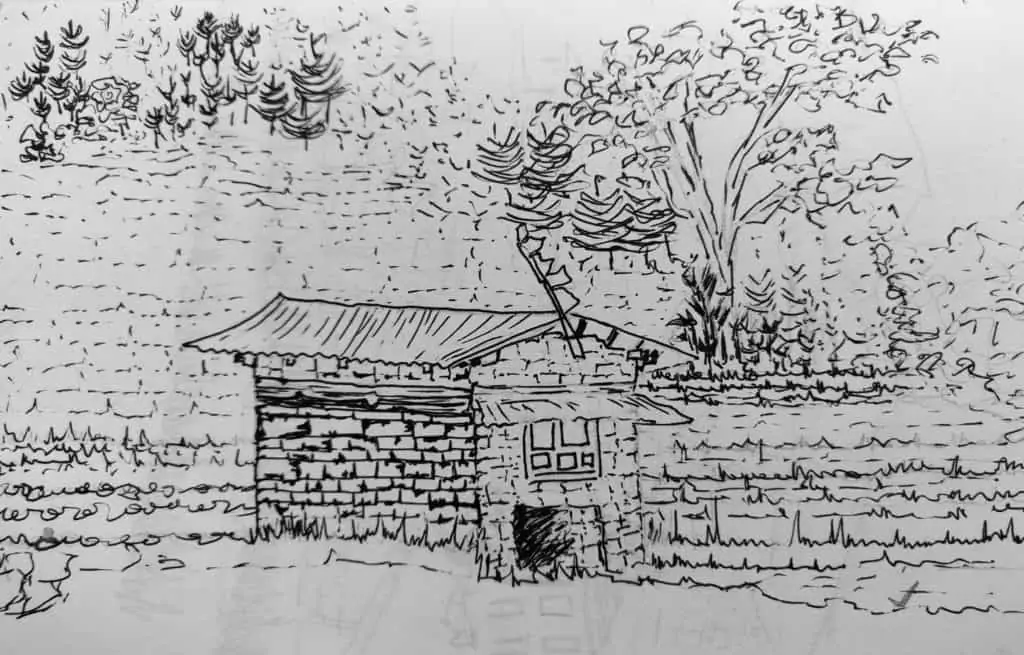 Traditional architectural styles prevalent in the eastern Himalayas across Sikkim, Bhutan and Eastern Arunachal Pradesh are characteristically simple with Buddhist influences and carved wooden window frames. The use of local sustainable materials such as rammed earth, stones and wood is customary.
Traditional architectural styles prevalent in the eastern Himalayas across Sikkim, Bhutan and Eastern Arunachal Pradesh are characteristically simple with Buddhist influences and carved wooden window frames. The use of local sustainable materials such as rammed earth, stones and wood is customary.
A prominent feature is the window assembly known as a rabsel in Bhutan. The wooden framed structure, which wraps around three sides of the upper floors, juts out over the lower storey. It incorporates the windows and has an elaborately carved cornice feature which is hand painted with stylised motifs. These are seen in simple dwellings and in the imposing Dzongs (fortressed building complexes).
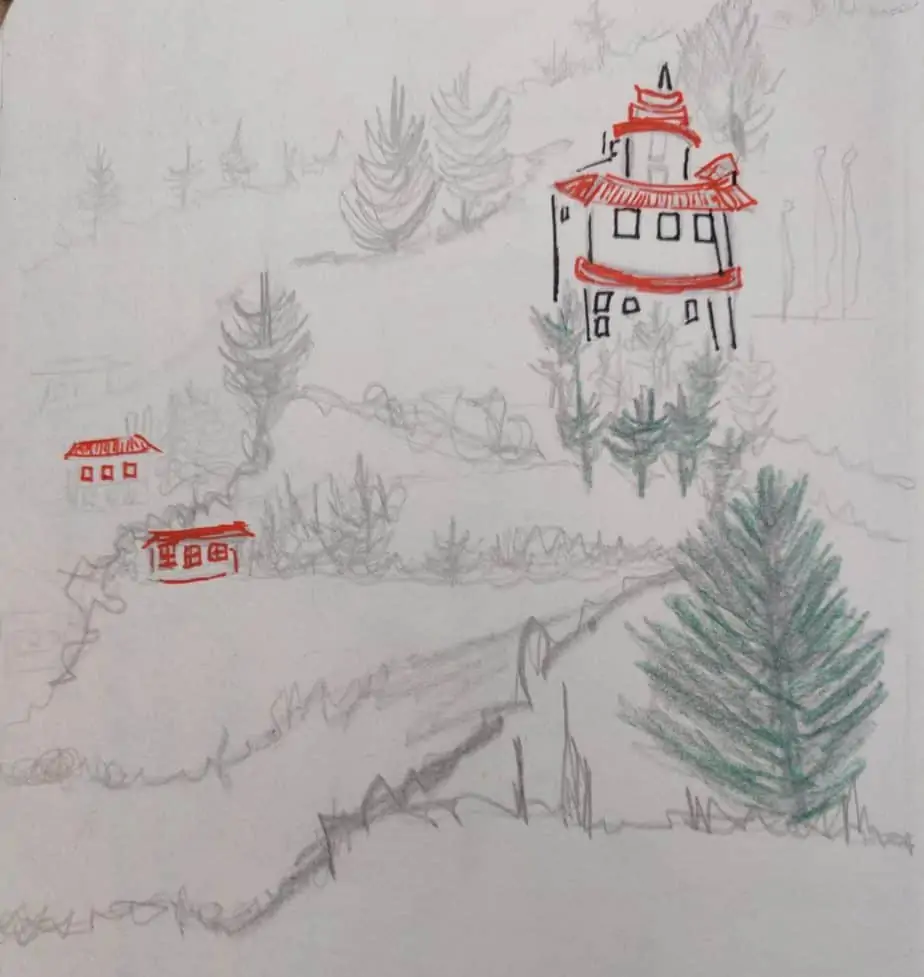
Red, white, bottle green, cobalt blue and yellow are considered sacred colours in Buddhism and are repeated everywhere. This is visible even in the Buddhist prayer flags that dot the eastern Himalayas. Window frames, wooden pillars, exposed timber beams, staircases, walls and ceilings are painted with small patterns or motifs. Flowers, conch shells, clouds, animals, prayer wheels, mountains, trees, dragons, water, demons and humans – the motifs are simple stylised forms of common objects and natural forms. Doors and entranceways appear grand due to the elaborate details that are added while painting. The use of gold accents in monasteries and small stupas is refreshing and enhances without being garish.
The tonal density of a particular colour is used to create a sense of perspective. As you travel through the region you notice three different types of structures – the Dzongs and monasteries, the rural houses and the small stupas along the roadside.
It’s the striking Dzongs built in the 17th century by Zhabdrung Ngawang Namgyal that gave Bhutan its unique identity separating it from typical Tibetan architecture. A Dzong houses the religious and administrative centres in each district. These were built to spread Zhabdrung’s ideology. A place to pray, collect taxes and provide security from invaders, these buildings acted as fortresses and are imposing in size.
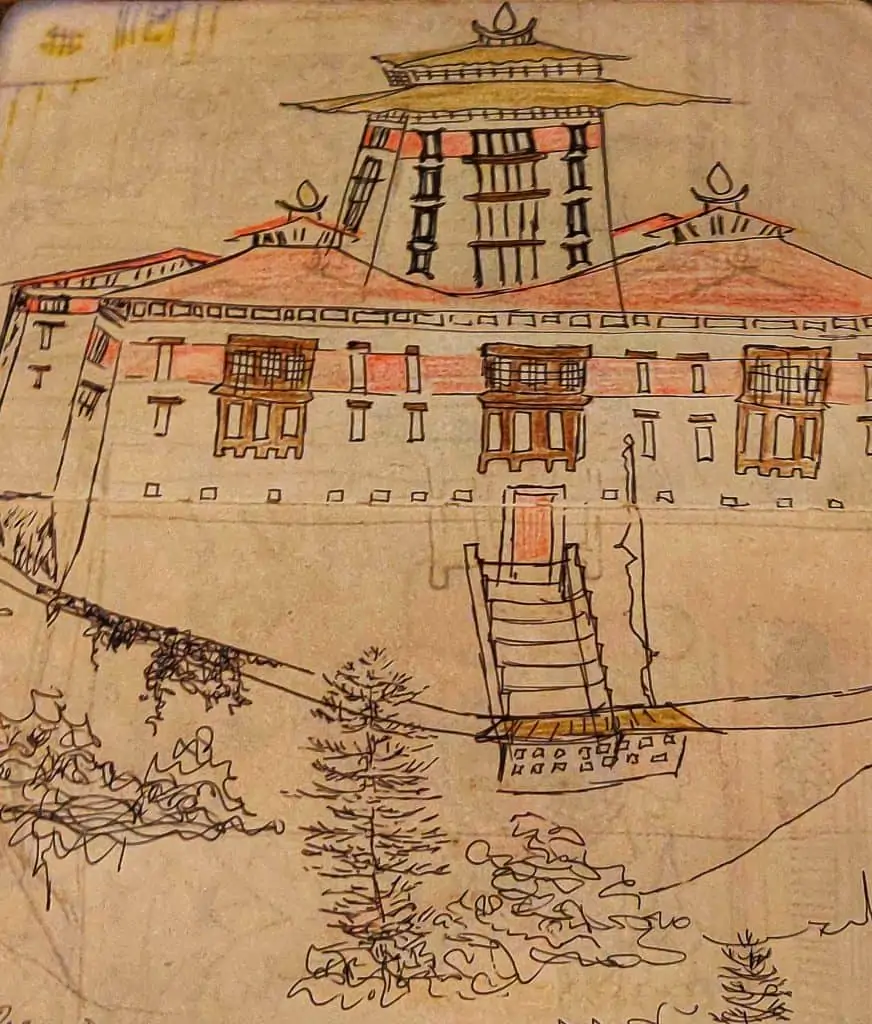
In India, the best example is the Dirang Dzong located in Arunachal Pradesh. Though the 500-year-old fort is now in ruins, the proof of architectural excellence can still be seen. The Phunaka Dzong in Bhutan my favourite both for its structure and location.
Dzongs have a Jabzhiroof, a square structure with a pitched roof on top of the main roof which is gold in colour. It is decorated at the corners with carved garudas or alligators and crowned with a golden cupola. These types of roofs are reserved for Dzongs and religious architecture. Houses in Bhutan are not permitted to have these roofs.
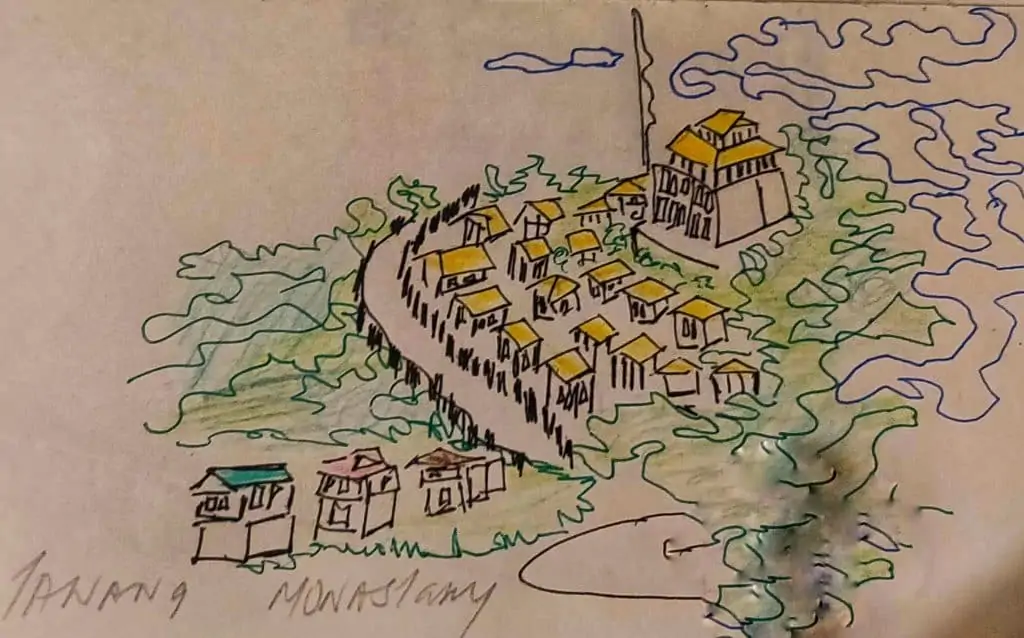 The Tawang monastery located in Arunachal Pradesh was built in 1860-61 A.D and is known as the Galden Namgyal Lhatse. It means celestial palace in the clear night and covers 135 sq. meters. The most imposing building of the monastery is the assembly hall known as “Dukhang”. It is a three-storied building standing on the northern side of the court and houses the temple. The interiors of the Dukhang are painted with elaborate murals and the altar covers the entire northern side of the hall. A silver casket veiled in silk holds the Thankas (painted scrolls). These are the Thankas of Goddess Sri Devi (Palden Lhamo), the main deity of the monastery, which was given by the 5th Dalai Lama. The Thankas, reportedly, were painted with blood drawn from the nose of the 5th Dalai Lama.
The Tawang monastery located in Arunachal Pradesh was built in 1860-61 A.D and is known as the Galden Namgyal Lhatse. It means celestial palace in the clear night and covers 135 sq. meters. The most imposing building of the monastery is the assembly hall known as “Dukhang”. It is a three-storied building standing on the northern side of the court and houses the temple. The interiors of the Dukhang are painted with elaborate murals and the altar covers the entire northern side of the hall. A silver casket veiled in silk holds the Thankas (painted scrolls). These are the Thankas of Goddess Sri Devi (Palden Lhamo), the main deity of the monastery, which was given by the 5th Dalai Lama. The Thankas, reportedly, were painted with blood drawn from the nose of the 5th Dalai Lama.
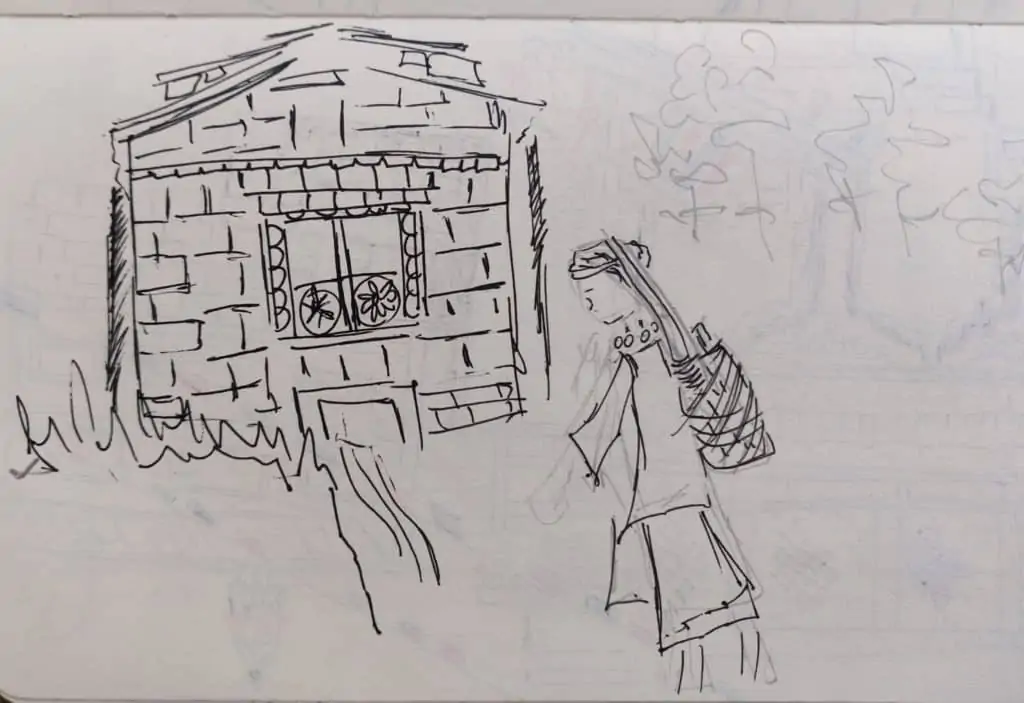
The rural houses, on the other hand, have two or three storeys with livestock on the ground floor and family members occupying the floors above. Right on top is an open attic used to store food grains, firewood, etc. Most houses have a white prayer flag pitched on the centre of the sloping roof. While top of these flags are marked in blue (to represent the sky), there’s yellow at the bottom for the underworld. As you drive past the villages, you will notice that large rocks are placed on the tin roofs to keep them from being blown off.
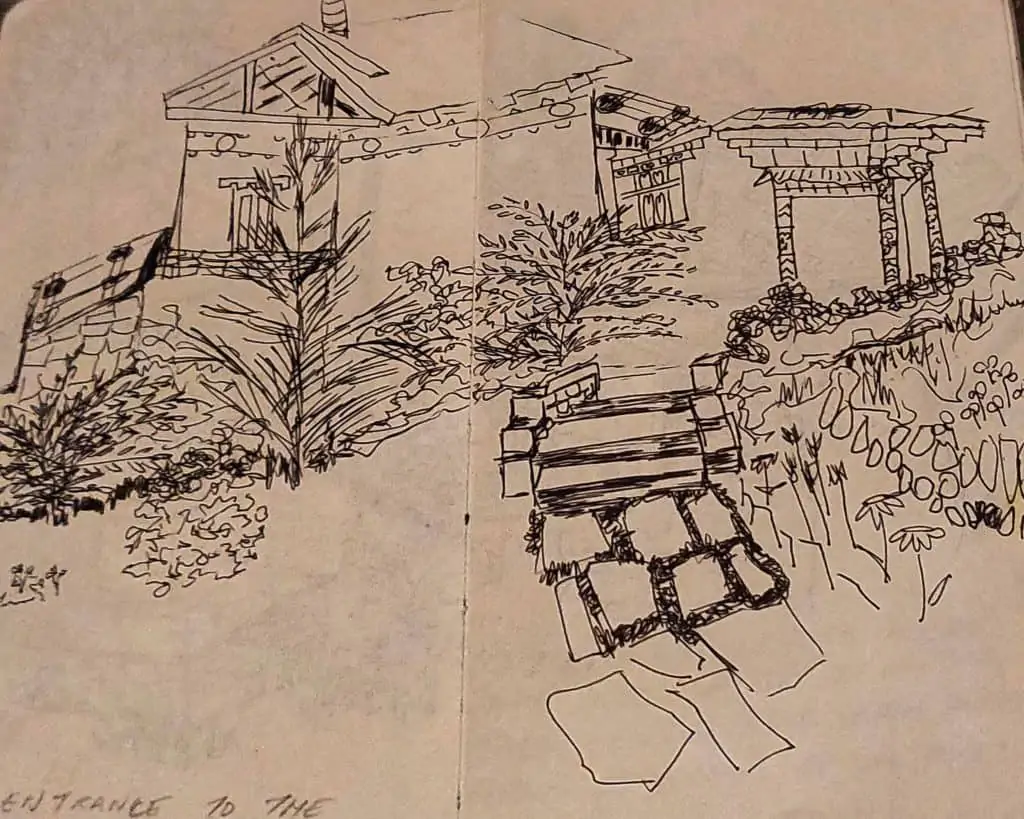
The small stupas or chortens built as religious structures vary in size from a temple that houses a large prayer room to a small structure on the side of a road.
Travel allows me to discover indigenous architecture and decor. I absorb details, colours, materials just as a sponge absorbs water and later try to execute some these ideas when I am styling a table for a supper party or spaces around a house. I collect handmade bamboo and cane baskets from different regions and use them around the house. Gentle reminders of my trips and the memories linger on.
Best time to visit Tawang monastery and the Dirang Dzong is October to April
How to reach Dirang and Tawang –
Tawang is Accessible from Assam via road. The closest railway station is in Tezpur. Guwahati has the nearest airport, though there are occasional flights from Tezpur too. Government and private buses and taxis ply to Dirang, Bomdila and Tawang. I recommend you hire a taxi from Dirang, Bomdila or Tawang itself to get around as there are no public buses in Tawang.
Visit our website for more information on Tawang.
All the sketches and images are from my personal travel journal.


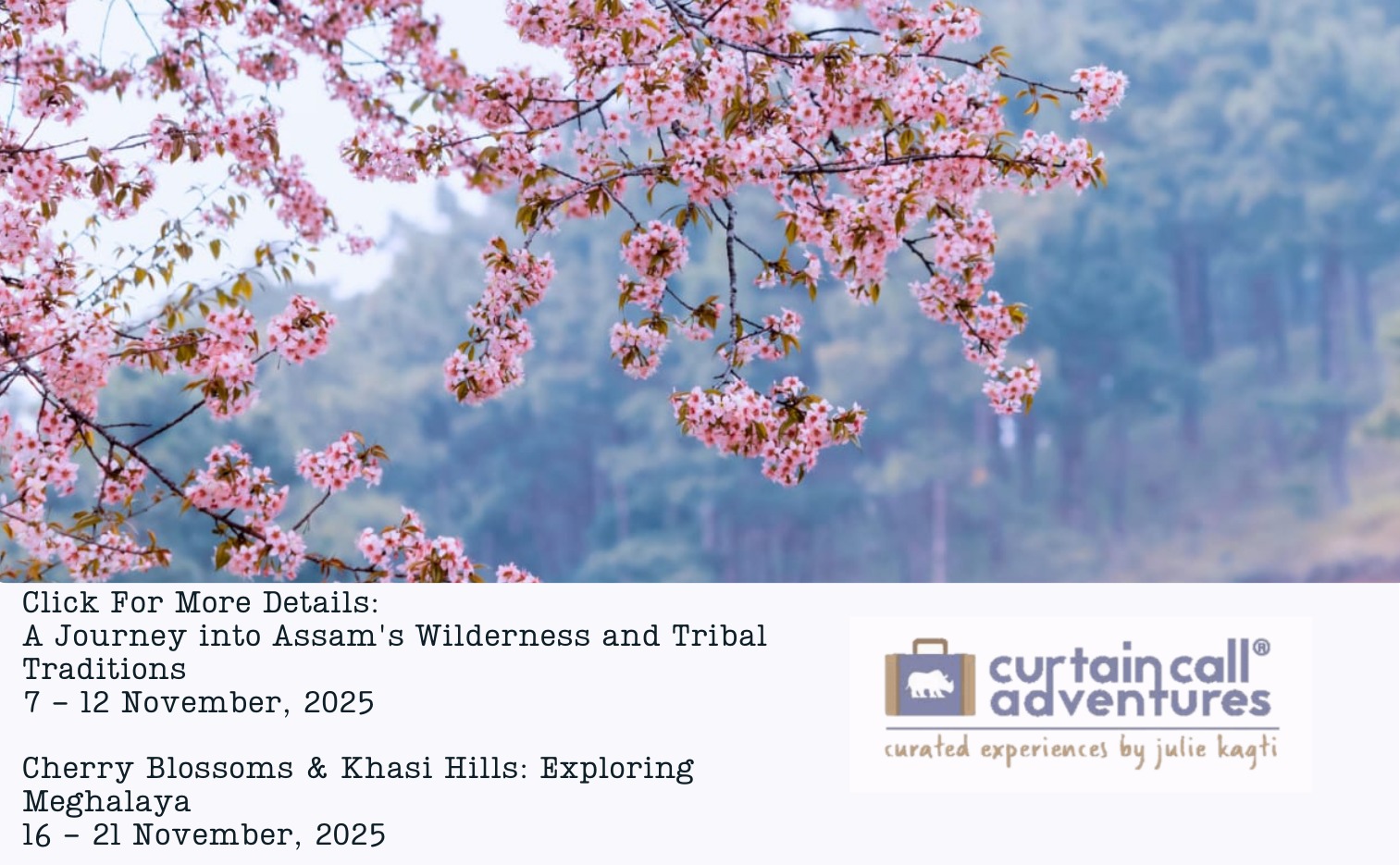
One Response
I hate it.